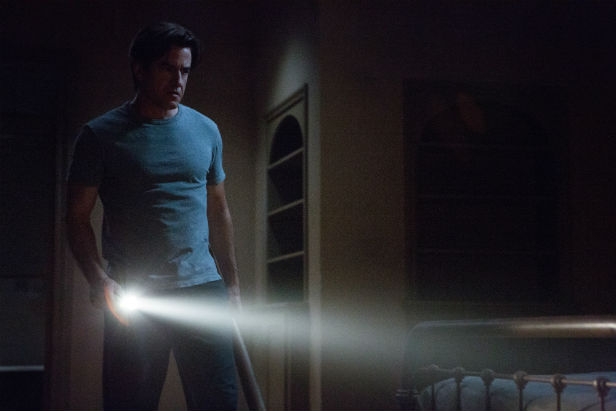Insidious (2010) was a refreshing supernatural horror. Creators James Wan and Leigh Whannell tore up the haunted house rulebook, adding a dash of astral projection lore and the most memorable movie medium since Poltergeist.
But what do you do when you killed off the most compelling character? Bring her back as a spirit guide? It’s been done. Instead screenwriter-turned-director Whannell opts to set this latest chapter three years before the Lambert family haunting. Will a new family mean a new start for the series?
As this is a prequel, ghost whisperer Elise (Lin Shaye) is still in the land of the living, but you wouldn’t know it. Between grieving for her late husband and the psychotic spirit haunting her mind whenever she uses her gift, she’s at her lowest ebb.
When teenager Quinn Brenner (Stefanie Scott) knocks on her door desperate to talk to her dead mother, Elise warns: “If you call out to one of the dead, all of them can hear you.”
Quinn continues to reach out, attracting the attention of soul-sucking spectre The Man Who Can’t Breathe. This evil spirit wants to make her his new ‘pet’, made all the easier after Quinn’s confined to her room with two broken legs.
Grief is a tricky thing to get right on film. While Elise cuts a tragic figure, sleeping wrapped with her husband’s sweater, scenes with the Brenners fall flat. Dialogue between Quinn and her father (Dermot Mulroney) seems forced, from awkward exchanges about her taking photos of breakfast (kids today), to Dad blurting out that he’s “drowning” under the pressure – it’s very formulaic.
There is a little brother in there somewhere, but he exists only to find Specs (Whannell) and Tucker (Angus Sampson) on YouTube.
Insidious: Chapter 3 is unlikely to win over new fans to the franchise. It’s a slow, jump-scare-ridden film with lazy callbacks to the far superior originals, lacking their visual flair and plot intricacies.
Where it does deserve credit is giving a 71-year-old woman a leading role in a genre usually focused on scaring the bejesus out of the young.
